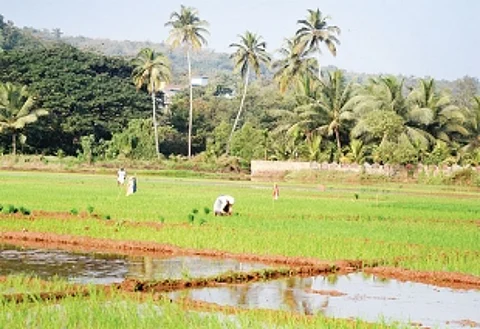

The quiet acts of heroism in Goa’s villages during the Covid-19 lockdown left a loud impression on an autonomous body that specialises in training government officers, elected representatives and civil society on the public roles they play.
‘Can we come up with something that looks
at what issues, beyond health, can arise for the rural sector once the lockdown
ends and how these issues can be tackled?’—a core team at the Goa Institute of
Public Administration and Rural Development (GIPARD) deliberated in the first
week of April.
On May 11, as a 12-page Ready Reckoner to
help Panchayati Raj institutions deal with the challenges of the pandemic and
the way ahead was given officially to the Agasaim village panchayat, it
appeared that deeds had met ideas.
“They (Agasaim panchayat) have done an
astonishing job during the lockdown, including feeding their migrants for a
month with cooked food. I suspect there will be many (such) villages in Goa.
Good positive stories to encourage us,” Mathew Samuel, director-general of
GIPARD sais on a WhatsApp message
On the phone from Agasaim, sarpanch Xavier Gracias says simply,
“We did our best to ensure people stayed at home by making sure they received
at their doorstep all their groceries, vegetables and even medicines, which we
sometimes had to source from Bambolim (over 7km away). Our volunteers worked
very hard.”
He feels the Reckoner—a compilation of possible challenges,
including social, psychological, economic, and health, that panchayats could
identify for themselves and solve—“can make a difference”.
“Right now, just because Goa is a Green Zone, people are simply
roaming around. We have to educate them on what they actually need to do and
how they should handle themselves,” says the 55-year-old.
GIPARD will handhold the panchayat as it carries out the
Reckoner’s stated exercises to identify the village’s strengths and weaknesses
using its already existent manpower—panchas, volunteers, village development
committees and self-help groups.
“The ultimate aim of the effort is to ensure that each village
in Goa becomes a self-sustaining unit,” says a senior official back at the
sylvan Old Goa settings of GIPARD.
Elaborating, he gives an example from Goa’s initial lockdown
period. “Some villages towards the Maharashtra border in Pernem taluka were
almost entirely self-sufficient, requiring only oil and pulses from outside. On
the other hand, many other villages, especially coastal ones, required to
import almost everything.”
Attributing this to many villages having residents who are
dependent on jobs outside their village, including in other parts of India,
abroad or on ships, he says, “Take the tourism industry’s cruise shipping line
for instance. Even if some of the operators are able to start operations soon,
the overall scenario for tourism is being forecasted as bleak for at least the
next 18 months. Then what is going to happen to the person from the village who
earns his living by working on a cruise ship if he can’t resume service? And
what is going to happen to his family and the village economy?”
He hopes the Reckoner together with an exercise being carried
out by the directorate of higher education and GIPARD to identify each village’s
specific strengths and therefore economic potential—milk production,
horticulture, craftsmanship, etc—will lead to the villages becoming
self-sufficient over time.
Dr. Seema Fernandes, an assistant director at GIPARD, who Samuel
calls “the brain behind the Reckoner”, says the compilation was the outcome of
talks, including via Skype, between GIPARD and the 12-member state resource
group that has been working with the institute for the last 5-6 years.
This group has representatives from the fields of education,
health, women and child development, a non-government organization, and more.
Fernandes adds that she was assisted by GIPARD core faculties Savita Patil,
Ashwini Acharya , and Arlette Mascarenhas.
“Once the draft Reckoner was ready we showed it to some
sarpanchas, block development officers, and even a self-help group
representative who is also a panch member for their views,” says Fernandes. She
says Guirim and Nerul village panchayats have shown interest in the Reckoner. Goa
has 191 village panchayats.
Proud of the work done by the team and positive that Goa’s villages can be self-sufficient, Samuel, a retired IAS officer employed on a contract basis by the government as secretary, Goa Lokayukta, with the additional charge as DG, GIPARD, says, “After all, they have proved, time and again, that they have the ability to stand up for themselves. They have proved to be little village republics.”